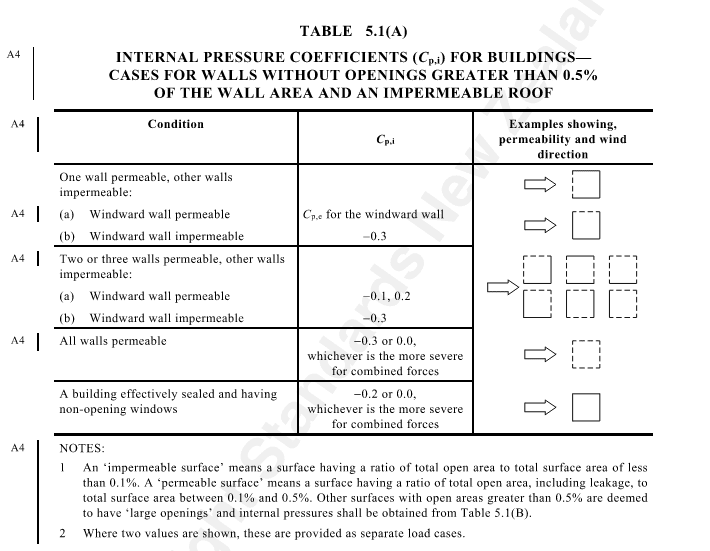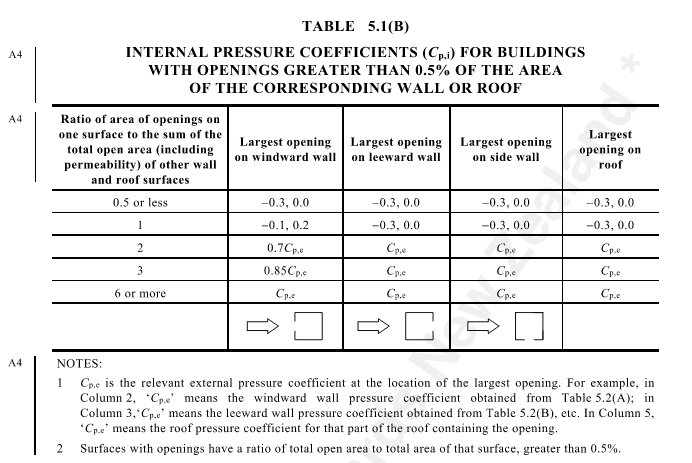m_struct
Structural
- Nov 11, 2020
- 64
Looking for clarification on using Table 5.1(A) and 5.1(B) for the internal pressure coefficient.
For table 5.1(A), it states "walls without openings greater than 0.5% of the wall area and impermeable roof".
- Does this mean a single opening or sum of the openings?
- Does wall area equal that face of the building or faces (sides)?
For Table 5.1(B), columns one states "ratio of area of openings on one surface to the sum the total open area (including permeability) of other wall and roof surfaces".
- Does this mean Σ(all openings on one surface)/ Σ(all openings on all other walls and roof)
- How is permeability included in there? Open area from permeable = % permeable * area?


For table 5.1(A), it states "walls without openings greater than 0.5% of the wall area and impermeable roof".
- Does this mean a single opening or sum of the openings?
- Does wall area equal that face of the building or faces (sides)?
For Table 5.1(B), columns one states "ratio of area of openings on one surface to the sum the total open area (including permeability) of other wall and roof surfaces".
- Does this mean Σ(all openings on one surface)/ Σ(all openings on all other walls and roof)
- How is permeability included in there? Open area from permeable = % permeable * area?


